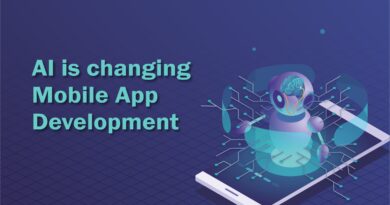5 business intelligence myths standing between you and a data-driven business
For decades, business intelligence and analytics (BI) tools have promised a future where data can be easily accessed and turned into insights and insights for decision-making. fast, reliable. For the most part, however, that future has yet to come. From the C team to the front lines, employees rely heavily on the engineering team to understand data and gain insights from dashboards and reports. As the CEO of a business and data intelligence company, I’ve heard countless examples of the frustration this can cause.
Why, after 30 years, traditional BI is not delivering value? And why do companies continue to invest in many discrete tools that require specialized technical skills? A recent Forrester report found that 86% of companies use at least two BI platforms, with Accenture finding that 67% of the global workforce has access to business intelligence tools. So why is data literacy still such a pervasive problem?
In most use cases, the inaccessibility of analytical forecasting stems from the limitations of today’s BI tools. These limitations have given rise to a number of myths, widely accepted as “facts”. Such misconceptions have undermined many companies’ efforts to implement self-service analytics and their ability and willingness to use data in critical business operations.
Myth 1: To analyze our data, we’ve got to bring it all together
Traditional data and analytics approaches, shaped by the limited capabilities of BI, require bringing together a company’s data in a single repository, such as a data warehouse. This consolidation method requires expensive hardware and software, expensive computation time if you are using the analytics cloud, and specialized training.
Too many companies, unaware that there are better ways to combine data and apply business analytics to it to make smart decisions, continue to succumb to costly, unhelpful analytical methods. efficient, complex, and imperfect.
Enterprises use an average of 400 different data sources to power their BI and analytics. This is an extremely large task that requires specialized software, training, and often hardware. The time and cost of centralizing data in an on-premises data warehouse or in the cloud will certainly negate any potential time savings these BI tools should provide.
Direct querying involves analyzing data, rather than vice versa. The data does not need to be pre-processed or copied before the user can query it. Instead, the user can directly query the selected tables in the given database. This is in direct contrast to the data warehouse approach. However, many Business Intelligence users still rely on the latter. Its time-consuming impact is well known, but people mistakenly accept them as the cost of performing advanced analytics.
Myth 2: Our largest datasets can’t be analyzed
Data exists in real-time in the form of multiple dynamic streams of information; no need to fossilize it and pass it to the scanning engine. However, such method-based in-memory databases are an essential part of business intelligence. The problem with this is that a company’s largest data set quickly becomes unmanageable or stale.
The volume, speed, and variety of data have exploded over the past 5 years. Therefore, organizations must be able to manage large amounts of data on a regular basis. However, the limitations of legacy BI tools, some of which date back to the 1990s, long before data, applications, storage, and anything else relied on an in-memory engine for analysis. data analysis felt like an invincible battle.
Businesses can solve the problems inherent in in-memory tools by directly accessing where the data resides, allowing access to larger data sets. It also helps to maintain a business analysis program. Direct Inquiry makes it infinitely easier to migrate from on-premises services to cloud services, such as those offered by our partners, AWS and Snowflake, with absolutely no need to rewrite code
Myth 3: We can’t unify our data and analytics efforts within the organization
Often, popular methods are confused with best practices. Special choices and combinations of BI tools create a wide range of options and features, with organizations frequently adopting departmental approaches. Sales can love a platform; finance may prefer something else, while marketing may choose another alternative.
Before long, each department had a different set of tools, creating information stacks that prevented applications from communicating with each other or sharing analytics information. According to the Forrester survey cited above, 25% of companies use 10 or more BI platforms. The problem is that separating data preparation, business analytics, and data science between different tools hinders productivity and increases conversion and translation times between platforms.
Some businesses work best when leaders allow their departments to choose their individual approaches. Analytics is not one of them. Leaders and decision-makers need to trust their data. But trust erodes each time it moves to another set of tools in its quest to generate useful insights. This process inevitably leads to data conflicts and opacity. Consistency and understanding are key.
Myth 4: Chasing the AI dream distracts us from the day-to-day realities of doing business
Many technologies, including BI tools, claim to be driven by AI. The promise is to replace human labor with amazing machine learning efficiency; Reality is often more disappointing. As a result, many companies have abandoned the idea of using AI in their daily analytics workflow.
Tech experts are understandably skeptical of real-world use cases for mainstream AI in the enterprise. People still must manually structure and analyze their data, extract insights, and make the right decisions from scratch. The idiosyncrasies and decision-making processes of the human mind are difficult to synthesize, if not impossible.
The trick to making AI a functional and effective analytics tool is to use it in a way that supports everyday business challenges without isolating it from them. Knowing exactly which AI-powered features you should use is essential. It can be smart but, like any tool, it takes direction and a steady hand to deliver value. Process automation allows people to use intuition, judgment, and experience in decision-making. No need to fear a robot uprising.
Myth 5: To get the most out of our data, we need an army of data scientists
Huge demand is building in the industry for the ability to collect vast amounts of disparate data into actionable insights. But company leadership still believes that they need to hire trained interpreters to dissect the hundreds of billions of rows of data that larger organizations produce.
Processing, modeling, analyzing, and extracting insights from data are in-demand skills. As a result, the services of data scientists with specific and intensive training in these areas come at a premium.
But while they add value, you reach a point of diminishing returns. And these employees are no longer the only ones who can perform data science. A generation of business workers has entered the workforce, and they are expected to assess and manipulate data on a day-to-day basis.
High-pedigree data scientists, in some cases, aren’t necessary hires when non-technical business users have governed self-service access to augmented analytics and decision intelligence platforms. These users have invaluable domain knowledge and understanding of the decision-making chain within their business. What’s needed to make their job more accessible is a solid foundation of data and analytics capabilities that traditional BI tools often struggle to provide.
Value propositions and broken promises
The current analytics and BI landscape have made it obvious to business leaders that certain natural limits are imposed on their data and analytics efforts. While still useful for specific use cases, traditional tools are applied in loose combinations, varying between one department and the next. The frustration that this causes the inefficiency and the potential time savings that are lost is a direct result of the gaps in current BI capabilities.
Traditional BI is preventing firms from making the best use of their data. This much is evident: Businesses on the enterprise scale generate vast amounts of data in various formats and use it for a wide range of purposes. Confusion is inevitable when the method of data collection and analysis is, itself, confused.
Something more comprehensive is needed. Companies lack faith in AI-driven processes because legacy BI tools cannot deliver on their promises. They lack faith in democratized access to data because their departments don’t speak the same analytics language. And they lack faith in their data because in-memory engines aren’t scaling to the degree they need, leaving them with incomplete and therefore, unreliable data.
Data and analytics innovation is how businesses deliver value in the era of digital transformation. But, to innovate, you need to know that your barriers are breakable.




